When embarking on a project, an individual or organization may solicit a contractor who can meet specific project tasks. A bid proposal serves as a comprehensive submission that showcases a company’s capabilities, expertise, and proposed solutions to meet the requirements of the project or contract.
This article explains what it is, the essential components of a proposal, and tips for writing an effective document. In addition to this, we have provided free templates that can be customized to suit your requirements.
Free Templates
Word format
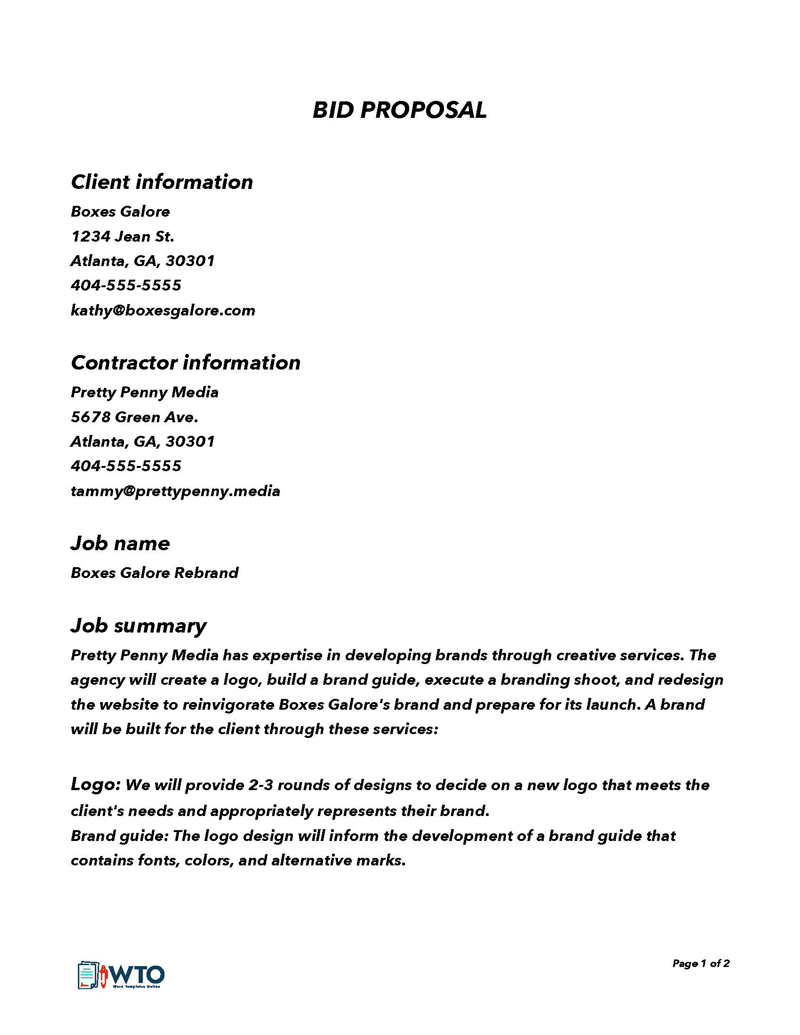
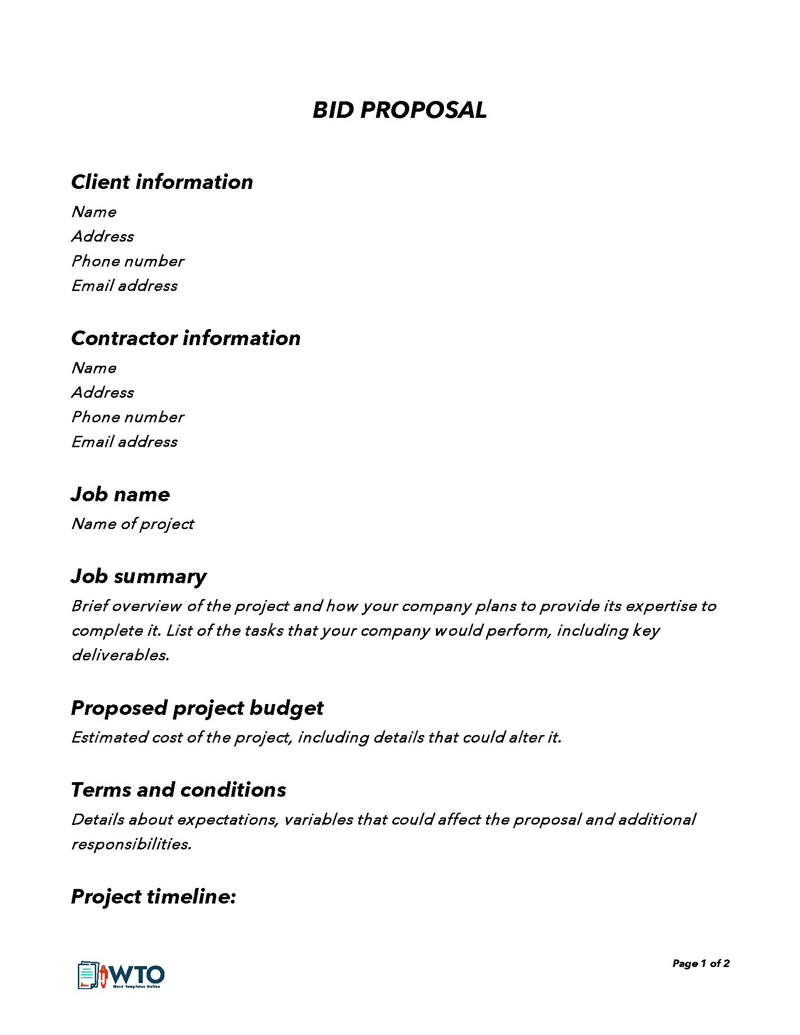
Excel format


What is Bid Proposal?
Companies use a proposal to outline their offer to deliver services or products at an estimated cost to the client to complete a project or task.
A bid proposal is a formal document that outlines a company’s approach, qualifications, and pricing for a specific project or contract.
It is typically submitted in response to a request for proposal (RFP) or invitation to bid (ITB) from a potential client or customer.
Bids ensure the availability of multiple pricing options for the same project. Based on the various responses received, a client can select an affordable contractor to work with on the project. The proposal form should be completed twice, with one copy going to the bidder and the other to the client.
Although any industry can use bid proposals, they are most commonly utilized by construction, advertising, marketing, and freelance contractors.
Things to Consider Before Drafting Bid Proposal
Before sending a bid for a project, it is important to consider several key factors to increase the chances of success.
These may include:
- Project requirements: Carefully review the project requirements, specifications, and scope of work to ensure that your bid aligns with the client’s needs and expectations.
- Competition analysis: Research and analyze the competition to understand their strengths and weaknesses, pricing strategies, and previous projects to position your bid effectively.
- Client’s budget: Consider the client’s budget and pricing expectations to ensure that your bid is competitive while also covering your costs and desired profit margin.
- Timeline and resources: Evaluate the project timeline, required resources, and your team’s availability to ensure that you can meet the project deadlines and deliverables effectively.
- Bid preparation: Prepare a well-structured and comprehensive bid proposal that addresses all the requirements and provides a compelling value proposition to the client.
- Qualifications and experience: Highlight your qualifications, relevant experience, and expertise in similar projects to establish credibility and trust with the client.
- Communication and relationship-building: Consider the client’s communication preferences and establish a professional and responsive communication channel to build a positive relationship with the client.
- Legal and contractual considerations: Understand and comply with legal or contractual requirements, such as non-disclosure agreements, payment terms, and intellectual property rights.
- Risks and contingencies: Identify and address any potential risks or challenges associated with the project and propose viable contingencies to mitigate those risks.
- Professionalism: Maintain a professional and courteous tone in your communication, and double-check your document for grammar, spelling, and formatting errors to ensure a polished and error-free submission.
Essential Components of Bid Proposal
This proposal typically consists of several components or sections that provide a comprehensive overview of your company’s capabilities, approach, and pricing.
The specific elements of a proposal may vary depending on the requirements of the project or opportunity, but generally include the following:
Cover letter
A cover letter is the first section of your bid proposal and serves as an introduction to your company and your proposal. It should be brief and personalized for the client, highlighting your understanding of their needs and expressing your interest in the project.
Executive summary
The executive summary is a concise summary of your bid proposal, providing an overview of your proposal’s key points. It should highlight the benefits and value of your proposal and create a compelling introduction to entice the client to read further.
Company profile
This section provides information about your company, including your background, experience, expertise, and qualifications. It should establish your credibility and demonstrate why your company is well-suited for the project.
Scope of work
The scope of work section outlines the specific tasks, deliverables, and services that your company will provide as part of the project. It should be clear, detailed, and aligned with the client’s requirements.
Technical approach
The technical approach section outlines your company’s approach to completing the project. It should provide a detailed description of the methods, processes, tools, and technologies that you will use to deliver the project successfully.
Pricing and payment terms
This section provides details on the pricing and payment terms for your proposal, including the cost breakdown, payment schedule, and any terms and conditions related to pricing or payments. It should be transparent and clearly state the proposed costs and payment terms.
Terms and conditions
The terms and conditions section outlines the legal and contractual terms associated with the proposal, including any terms related to ownership, confidentiality, warranties, liability, and dispute resolution. It should be clear and concise, and any important terms should be highlighted.
Schedule or timeline
This section provides a timeline or schedule for the project, outlining the key milestones, deadlines, and deliverables. It should be realistic, achievable, and aligned with the client’s expectations.
Supporting documentation
Include any relevant supporting documentation to strengthen your proposal, such as case studies, references, resumes, samples of previous work, or certifications. This can help establish your credibility and expertise.
Conclusion
The conclusion is the closing section of your bid proposal, where you can summarize your proposal’s key points, express your appreciation for the opportunity, and invite the client to take the next steps.
note
It is important to carefully review and tailor each component of your bid proposal to meet the specific requirements of the project or opportunity and create a compelling and professional proposal. Consider seeking feedback from colleagues or experts to ensure that your bid proposal is comprehensive, persuasive, and aligned with the client’s needs.
More Templates and Examples
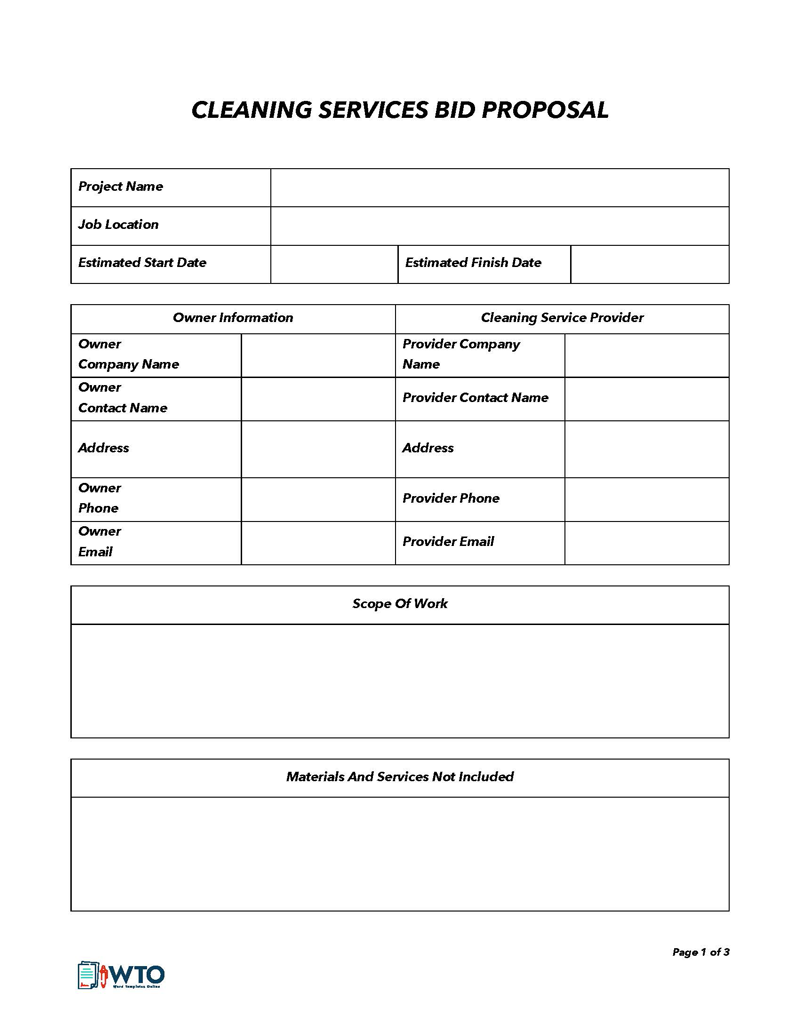
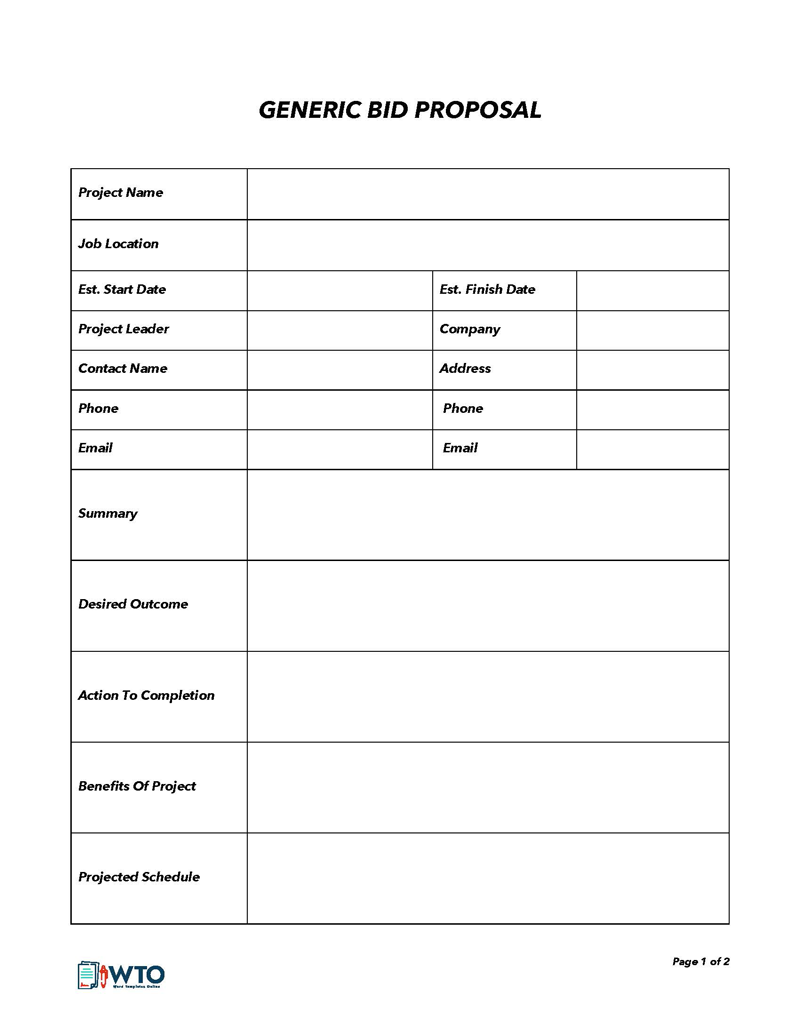
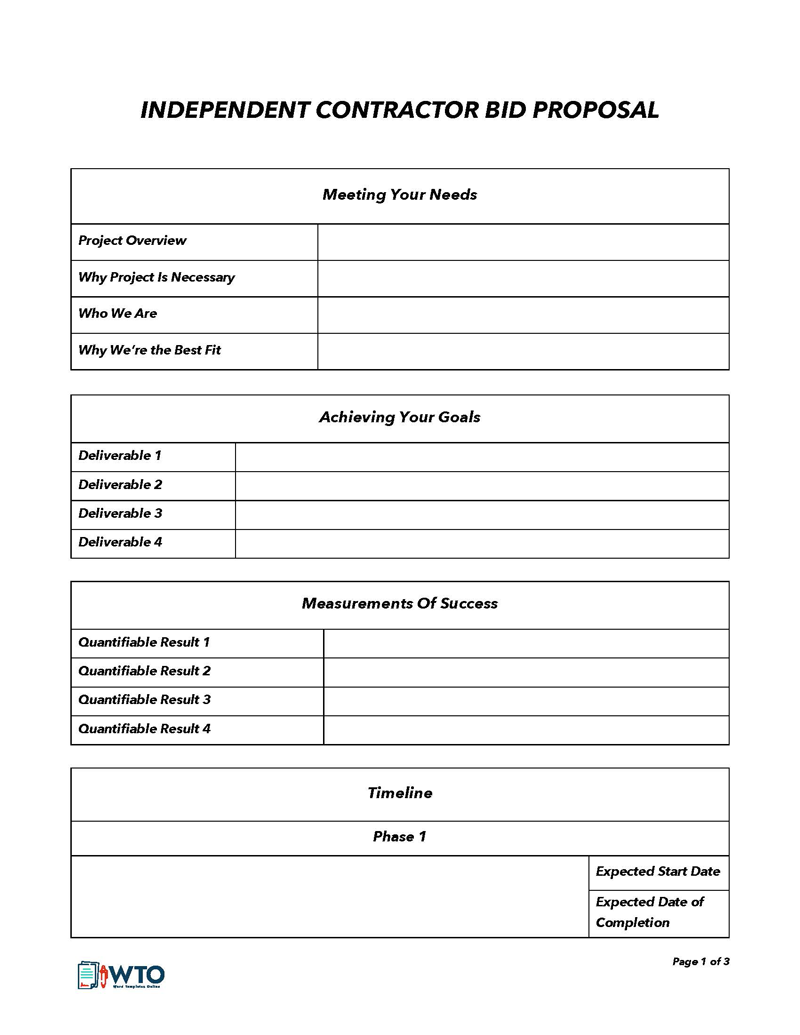
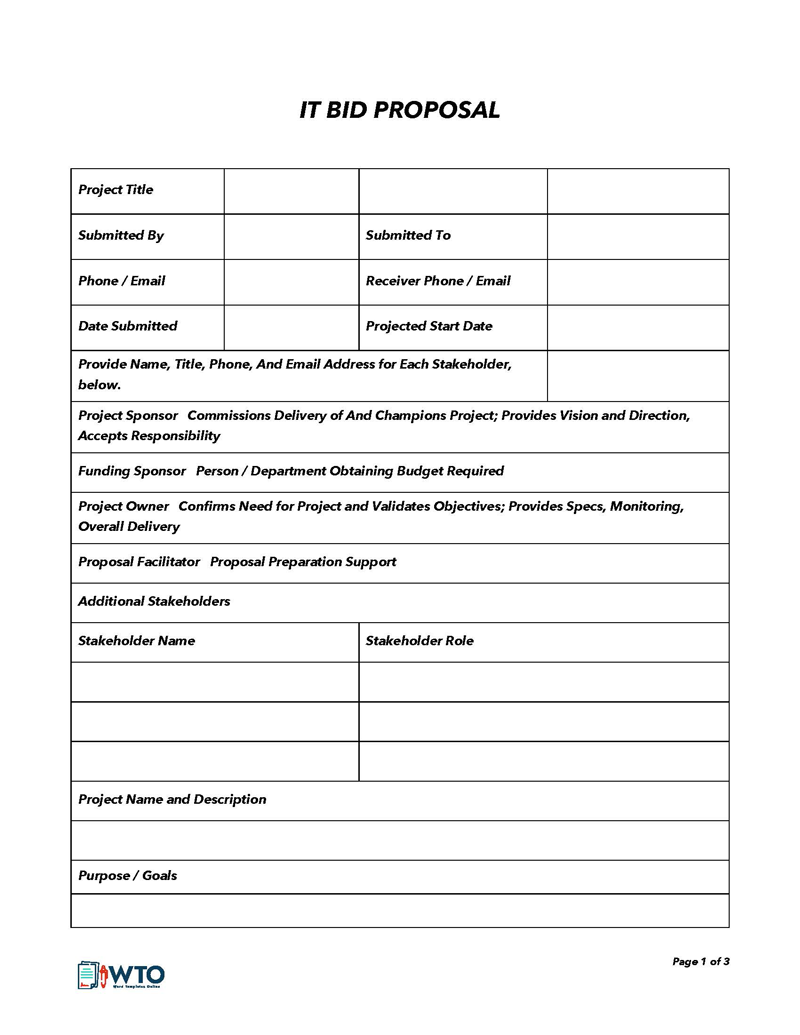
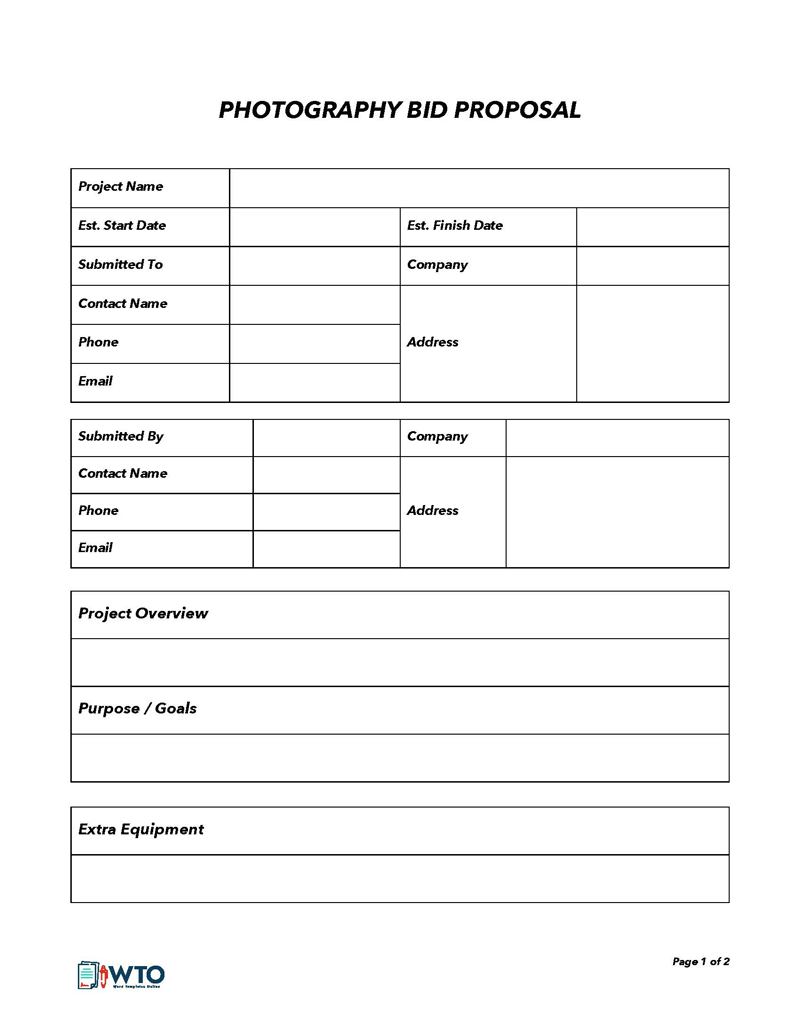
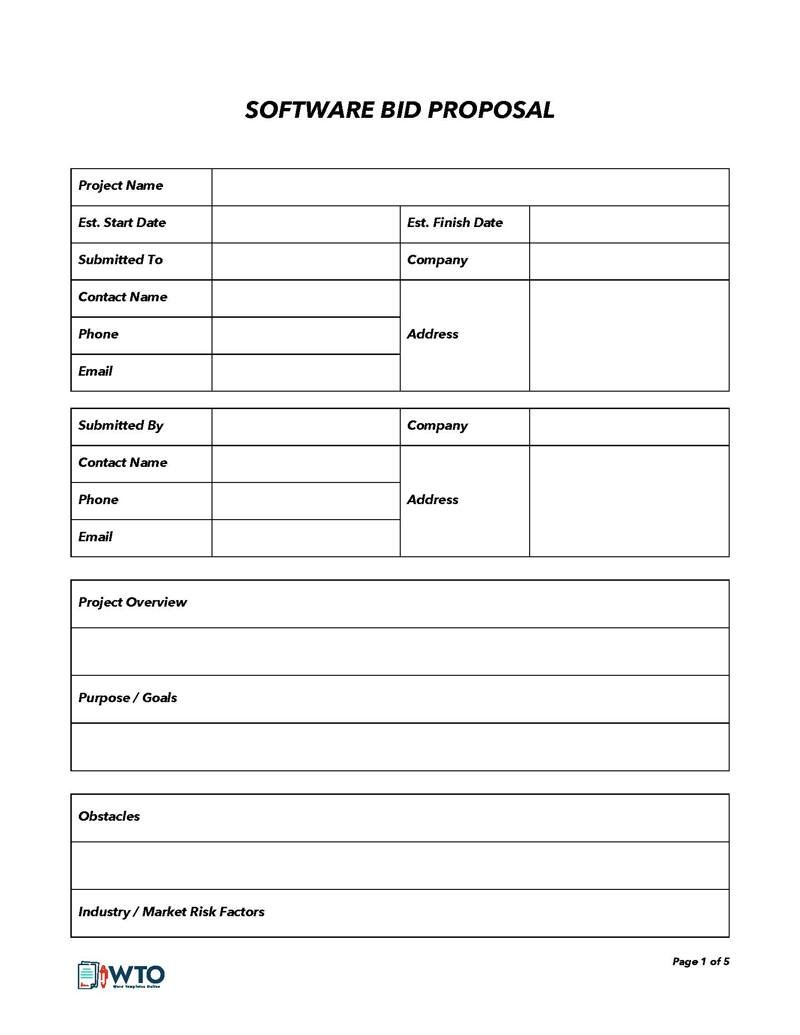
Tips for Bid Proposal
The company should consider a few tips when bidding for a project. The tips will help ensure that the proposal is comprehensive. They will also ensure that information is appropriately conveyed.
The following should be considered when writing a proposal:
Proofread the document
Upon completion of the document, the contractor should proofread it. This will help ensure that there are no grammatical or formatting errors. It will also ensure that the proposal includes relevant details about the project and expected deliverables.
Be realistic
The estimated cost and time frame for the project should be realistic. It will make sure that there are no extra costs incurred as a result of the project’s deadline being extended. Factors that may delay the project should be considered when estimating the deadline.
Research the client
Research the client’s business, industry, and any relevant information that can help you tailor your proposal to their needs. Understand their pain points, goals, and expectations to address them effectively in your proposal.
Highlight your strengths
Communicate your company’s strengths, qualifications, expertise, and relevant experience in your proposal. Explain why your company is the most suitable candidate for the project and how you can add value.
Frequently Asked Questions
A bid proposal is a document that outlines your company’s approach, qualifications, and pricing for a specific project or contract. It is typically submitted in response to a request for proposal (RFP) or invitation to bid (ITB) from a potential client or customer.
To customize a bid proposal for a specific project, carefully review and understand the project requirements and tailor your proposal accordingly. Use the client’s terminology, address their needs, and provide relevant examples or solutions that are specific to their project.
In some cases, the client may allow or request revised bid proposals after the initial submission, especially during a negotiation or clarification phase. However, be sure to follow the client’s instructions and deadlines for submitting revised proposals, and only make the necessary changes requested by the client.
Final Remarks
Bid proposals are a critical tool for businesses seeking to secure contracts or projects. A well-crafted bid proposal can showcase your company’s qualifications, approach, and pricing, and ultimately increase your chances of winning the bid. By carefully analyzing the project requirements, customizing your proposal, following formatting guidelines, proofreading for errors, and including relevant attachments, you can create a compelling bid proposal that stands out from the competition. You can use a template to create a proposal that contains all essential details and appears professional.




